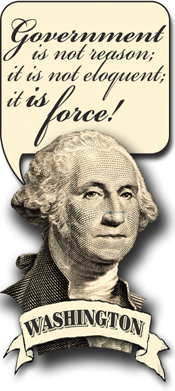Filed under: Domestic Policy, Energy, News the Media Doesn't Want You to Hear, Science/Technology | Tags: Cap-and-Trade, Carbon Confusion, Debunking Liberal Lies, Environment
Cap-and-trade has been much in the news, but Americans haven’t a clue what it is. A recent Rasmussen poll found that only 24 percent of respondents could correctly identify cap-and-trade as something having to do with the environment. A slightly larger percentage — 29 percent — believed that it had something to do with regulating Wall Street, and another 17 percent thought it had to do with health care.
Cap-and-trade does have to do with the environment, or at least with some views of the environment. It is a plan to force industry and other groups — anyone who emits carbon — to buy permits to release CO2. Those who emit less than their permits allow can sell their unused permits to others who emit more. Just those three sentences are enough to confuse anyone.
But industry does not bear the costs, they simply raise their prices. [You surely know that business does not pay taxes, don’t you? They just pass the cost of the taxes on to consumers].
Perhaps if we correctly called it “cap-and tax-you-a-lot,” folks would be more interested. Douglas Elmendorf, director of the Congressional Budget Office told the Senate Finance Committee on Thursday that “Under a cap-and-trade-program, consumers would ultimately bear most of the costs of emission reductions.” Actually some businesses stand to profit significantly, like GE and Duke Energy.
If “carbon emissions were cut by 15%” the CBO said, “it would cost each American household an average of $1,600 a year. In a worst-case scenario, the cost is $2,200 per household.” MIT in 2007, estimated tax increases at $3,900 a year, but some dispute that number, and another MIT economist came in at $3,100. Whatever it is, it won’t be small.
Many scientists do not agree that CO2 is a problem. Many scientists doubt that such a program would have any affect on CO2 in the atmosphere. Many doubt that CO2 has anything much to to with so-called global warming, since it is only a trace gas in the atmosphere.
Cap-and-trade has been tried in Europe, and has had no affect whatsoever on CO2 emissions, but a deleterious effect on the economy. The slowdown from the world capital crisis has done much more to lower emissions from shuttered industry.
The Obama administration feels that “policymakers can significantly affect the distribution of costs , depending on how they decide to distribute the value of the allowance.” The Democrat-led bill in Congress aims to cut U.S. carbon emissions by 20 percent from their 2005 levels by 2020, and dramatically boost reliance on renewable energy. Chip Knappenberger of Master Resource has calculated that Waxman-Markey — the Democrat led bill in congress — would at best avert 9/100ths of one degree in global warming. Which doesn’t sound even slightly cost-effective.
It is all very confusing. Many say that Waxman-Markey has no chance of passage. Obama seems set on passing cap-and-trade, and wants it passed by congress. Climate realists say that it will accomplish nothing at all, and be an economy destroying bill. Lisa Jackson, head of the EPA, said that an agency finding that carbon dioxide is a public health danger won’t necessarily lead to government regulation of emissions. Others say that Obama needs the income from cap-and-trade to establish his health care plan.
If you care about a large tax in the guise of increased prices hitting you about the same time that inflation from the government’s profligate spending does, it might be wise to learn what you can about cap-and-trade, and Waxman-Markey and other efforts of the government to separate you from more of your money.
Leave a Comment so far
Leave a comment


























